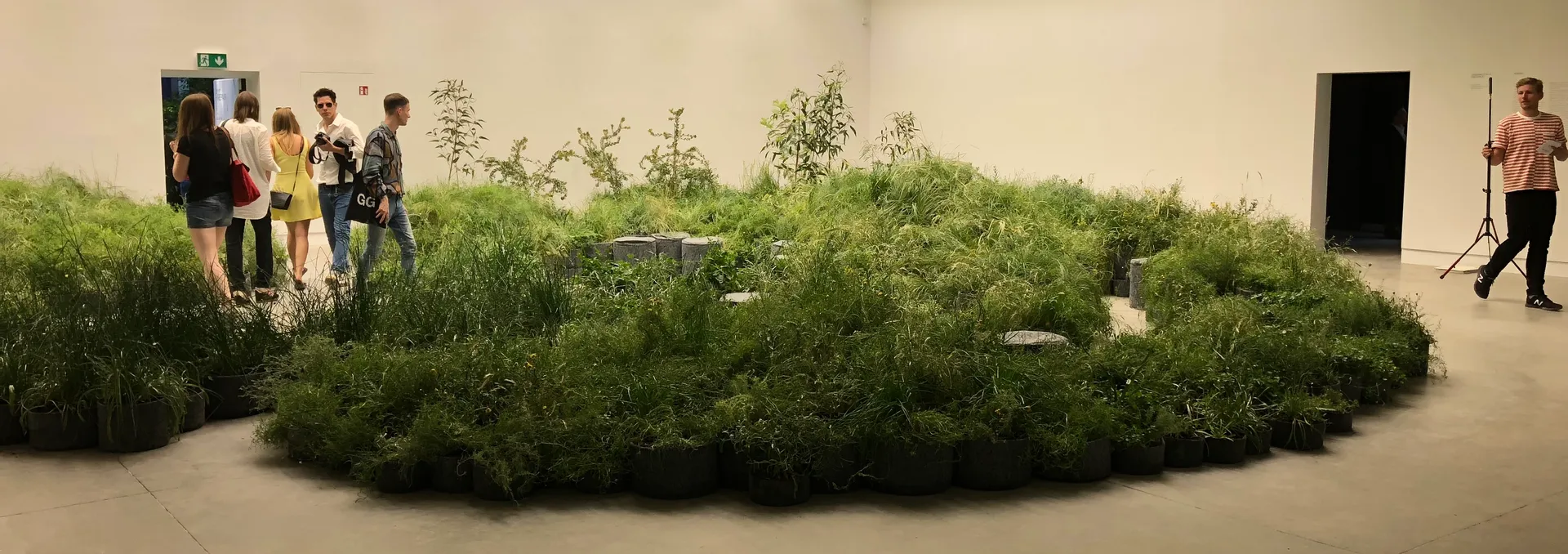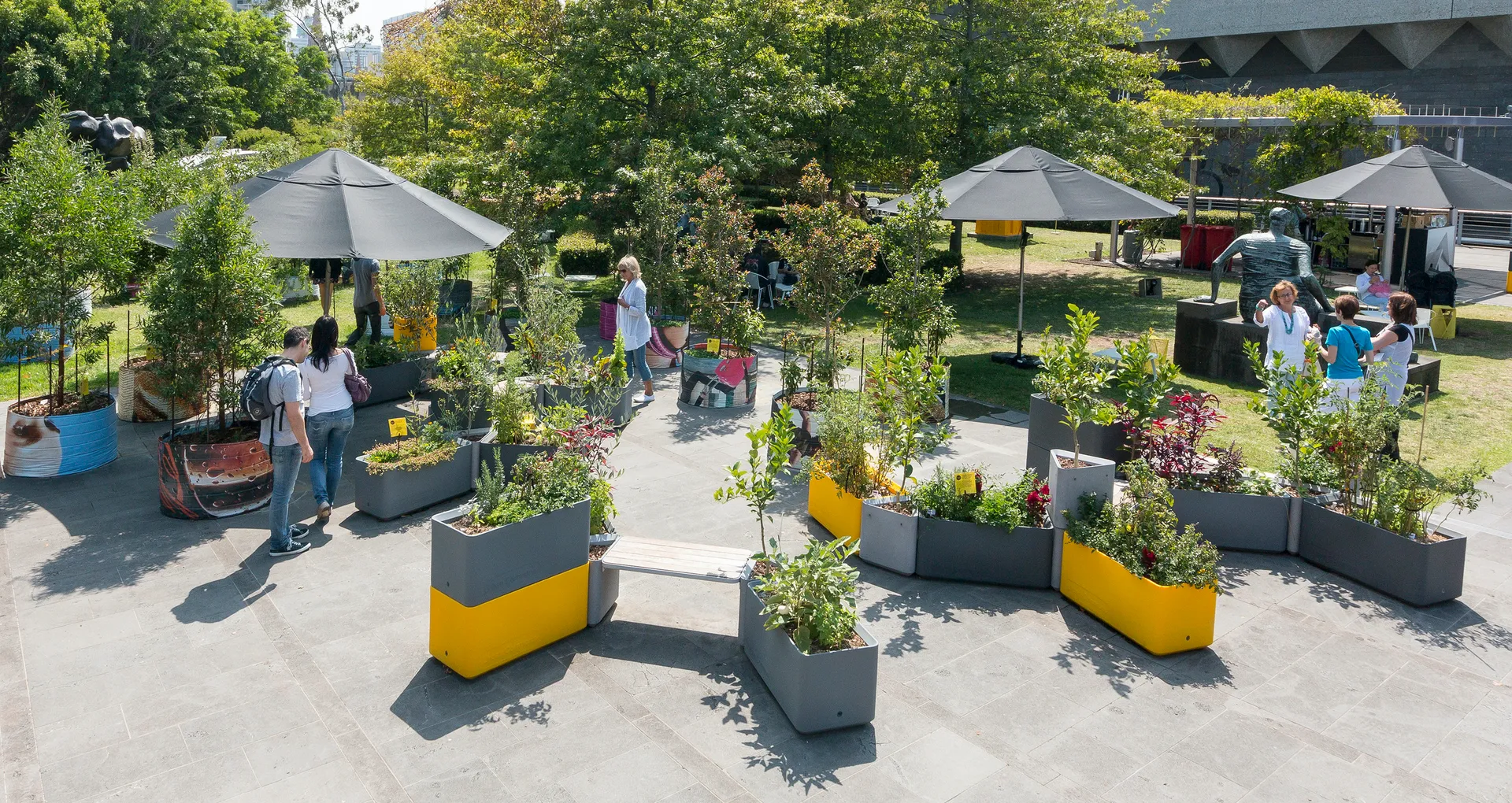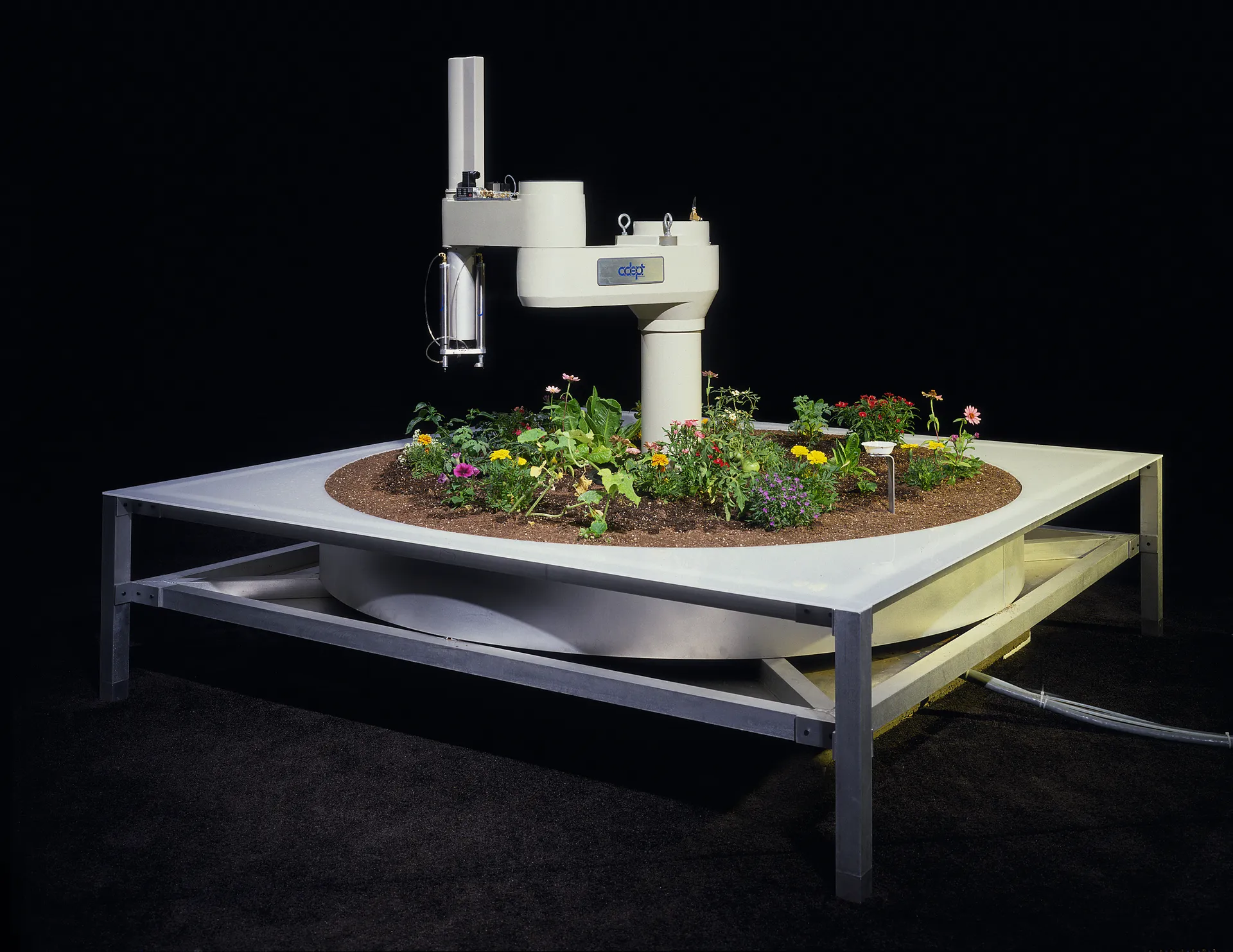The smart city is not just alive, but live. On the surface, its urbanism may appear alike to any other in the present: an imbroglio of inhabitants and infrastructures each co-evolving in myriad distinct ways. What remains largely unseen is the very promise of ubiquitous computing to create a networked layer that mediates these interactions over the course of seconds and seasons.
The value of this ambient datascape is not just to produce a historical record, but to exert immediate and ongoing control over urban space and its affordances. At present, this capacity is primarily portrayed as serving merely managerial ends – to route traffic and trash. But, as the data mine deepens, so will the scope of its effects. Any sufficiently advanced informatics layer has the capacity to become the de facto if not de jure model for designing a city.
If designers are to gain meaningful agency within this framework, we need to meet it on its own terms and adapt our practices to become similarly continuous and contingent. Such an adaptation would challenge the scope and standing of the disciplines that shape the built environment. Simultaneously, it offers the chance for design practice to become an immanent capacity that is embedded in the urban landscape, rather than confined to the spatial and temporal scopes of a particular project.
Embracing this capacity would require working within the processes of continuous monitoring and continuous deployment that define software and thus form the operating logic of the smart city. While this would (at first) appear to require a radical departure from existing practices, both computational design and landscape architecture present distinct models for how to design between the real and the real-time.
The Gardened City
Over the course of the 1990s and the first ‘digital turn’, the computer-aided practices of architecture and landscape architecture converged as virtual environments became increasingly adept at representing the sub-geographic characteristics of landscapes. A disciplinary intersection ran parallel to this overlap in digital techniques, as proponents of landscape urbanism advocated for the scale and dynamism of landscapes to become the fundamental framework for designing in an urban context. The co-evolving exploration of these new strategies for urban design and digital design shared a common ‘process discourse’1 that highlighted the dynamic capacities of each medium. Exploring this dynamism pushed the design process to act at a distance2 as the trajectories of virtual, urban and ecological processes could be directed by scripts (be they coded or diagrammed) that prefigure, but do not predetermine, their products.
By positioning their medium as the defining model of contemporary urbanism, landscape architects aspired to gain a greater role in designing across the ecological, social and economic challenges of 21st-century cities.3 Gaining that agency also meant being drawn into the spirographic Venn diagram of disciplines involved in designing the urban environment. Set against these blurred boundaries are a number of emerging positions that advocate for the more autonomous aspects of landscape architecture that can contrive these broader ambitions in more specific materials and methods.
Figure .
Figure . The gallery space displayed threatened grassland species indigenous to the Western Plains of Victoria, Australia. The act of transposing the plants highlights the precursor process of growth (and horticultural expertise) needed to produce them alongside the technologies (a diurnal simulation) and maintenance practices required to sustain them within an environment designed for people. Baracco + Wright, Repair, Australia Pavilion, Venice Architecture Biennale, 2018 .
These calls are grounded in an understanding of how to design with systems that are literally living – most notably plants. Here, the nature of biological growth presents a fundamental and unique form of indeterminacy: a live matter whose “growing dynamic disables the fixity of form”,4 and an organic tectonics (or ‘viridics’)5 that require any realisation of design intent to embrace contingency in its planning alongside actions that are exerted in-place and over time. This concern with designing the dynamic is not new territory for landscape architects, or architects. Instead, a focus on vegetation serves to highlight a common limitation in the pursuit of formation over form: that the expression of process is rarely employed on-site and in response to a coextensive context. If the orchestration of dynamic behaviours is confined to representations that precede construction, or are fixed in pre-planned maintenance schemes, they presume a limited and linear trajectory rather than a responsive tie between designed and emergent patterns of growth.6
This shift in design strategy suggests a shift in professional capacity. To respond to a living system requires an ongoing relationship where designers act as co-authors in the making of a site, rather than as temporary consultants delimited by the distance of representation and the duration of a commission. This, at first, might seem like a retreat to the garden from a discipline that has often sought a (self) conscious distance from it. However, the primacy of plants in this model is revealing of its methods rather than its limits. The ambition to shape the wider systems of the city remains in scope, and their processual and systemic nature remains in sight. Adopting a more continuous form of design practice constitutes a change in tactics, not goals, that stems from a more grounded engagement with the adaptive systems and their unfolding specificities.
Figure .
Figure . The 'Foodscapes' exhibition ran for several months as part of the 'Melbourne Now' exhibition. In addition to designing a planting schedule focused on native and indigenous edible plants, AKAS maintained the plants and facilitated public engagement with the landscape through a series of workshops and tours. Urban Commons and AKAS Landscape Architecture, Foodscapes Exhibition, Garden of the National Gallery of Victoria, Melbourne, 2013 .
Parallel Computings
Projects like the Songdo International Business District in South Korea, or those imagined by Sidewalk Labs for the Toronto waterfront, present visions of ubiquitous computing that emerge alongside similarly eager calls to remake the existing urban landscape. The former project, under construction since 2005, is a greenfield development built on reclaimed marshland following a Kohn Pedersen Fox masterplan and a Cisco-lead rollout of digital infrastructure and services. In the latter project, the Alphabet subsidiary’s development proposal sees the brownfield site underpinned by a suite of subterranean services and topped by mass timber buildings tied to a smart solar grid.
Despite their ambition, the projects that birth a city’s digital twin are of lesser concern and promise than the procedures that define its ongoing operation. However, most visions of functioning smart cities implicitly exclude design – whether as a professional service or user affordance – as a service within the network layer. Instead, the data shadows cast by smart streets are typically framed as merely facilitating or optimising the management of traffic, waste, maintenance, and other infrastructural services. This portrayal seems knowingly conservative in how it caters to the pre-existing concerns of municipal authorities. It offers little potential to designers, besides — perhaps — a better record of footfall and other priors whenever sufficient pressure builds to shape or reshape a plaza, park, or precinct.
Figure .
Figure . An early example of net art, the Telegarden installation invited Web users to remotely and collaboratively operate an industrial robot arm that could plant seeds, disperse water and observe its environment. It demonstrates an optimistic means for networked technologies to mediate a community's interactions with living systems. Ken Goldberg and Joseph Santarromana, The Telegarden, Ars Electronica Center, Linz, Austria, 1995–2004 .
A more extensive form of practice, following the ‘gardening’ model, offers a chance to engage a continuous and ubiquitous process of sensing on its own terms. At the same time, it also presents a new role for computational design strategies given their use of generative systems is similarly constrained by a project-driven model. Those systems may be defined by parametric morphologies, exotic optimisations, machined learnings, or other scripts within the computational canon, but their primary purpose is to produce or refine design features, and so their generative capacity is confined to the design process.
For landscapes, urban or otherwise, the mechanics of emergence are not just strategies for pursuing form, function, and fabrication; they are a prominent capacity inherent to the medium in which designs are realised. The task of cultivating these capacities could be greatly augmented if the use of computation as a record of design intent could interface with its use as a record of urban conditions. Uniting the two roles would allow for the evaluation and evolution of a design to become more meaningfully performance-driven given the surfeit of data derived from ongoing occupation, the opportunity to evaluate performance incrementally, and the ability to deploy design changes iteratively and experimentally. Vertically-integrated practices, such as WeWork7 or Disney,8 offer examples of how this process of design research can hone design intuition. While they operate in a (comparatively) narrow spatial context and employ a customer-service relationship, each company is able to employ live spatial data to inform design models that, in turn, directly inform ongoing design projects over the short and long term.
Figure .
Figure . Snapshots from a population of models that simulate the evolution of plant growth in response to the ongoing erosion of a layered soil profile. Each instance recreates and tests the logic of Mosbach Paysagistes' design for the mounds of the Environment Gallery within the Botanical Garden of Bordeaux. The soil profiles, landform and edge coping of the mounds regulate and highlight the effects of natural processes. Philip Belesky, The Gallery Gallery, 2018 .
This tie also offers to more easily integrate the immediate responses of a continuous practice of design with the more elongated contingencies of longer-term design direction. Allowing the models that define the latter practice to be updated by the realities of the former provides a way for design intent to continue to develop over lesser or greater time-frames without privileging the spatial or temporal scales of either practice. Both the virtual landscapes of persistent game worlds, and the model of the ‘garden as laboratory’,9 present different implementations of the same process of patching, or pruning, emergent events in service of a more abiding agenda.
A continuity of purpose between these different scales of action, in turn, can bridge the gap between the ‘in house’ design practitioners of local authorities and those procured for the demands of more extensive projects. To better extend design practice across these roles is to better navigate between the opportunities of the present and future state of the city – a middle ground that requires greater flexibility given the uncertainties posed by climate change and urban growth. These trials ask designers to impart resilience and adaptation in the urban landscape at the same time as our existing means of practice limit a more comprehensive pursuit of these ends.
Big Data and Little Plans
Alongside its threats to privacy and polity,10 the smart city model challenges the role of the architectural professions as the purveyors of spatial intelligence and the role of the built environment as a cornerstone of urbanism.11 As data becomes big, its conclusions become more amenable to machinic, rather than disciplinary, interpretation. As data becomes incessant, its implications become more amenable to short cycles of action rather than partitioned planning processes. Both shifts place us at a comparative disadvantage to technology companies as it is their medium that orchestrates a network urbanism.
We can, and have, become ever-more adept at employing technology for our own purposes. But this will always be an uphill climb if design practice itself is not reconfigured – not merely retooled – in response to the dynamics of ubiquitous computing. For our disciplines to have agency within these systems they need to become more attuned to their dynamics and thus operate as a continuous and responsive practice. Without this, our expertise sits outside the smart city; acting through the lag-time of projects rather than in response to the real-time performance of places.
Expanding our attention to smaller spatial and longer temporal scales might seem like an overt concession to the operating model of the urban network. While landscape architectural models demonstrate how this focus can operate contextually, a more wholesale adoption risks marginalising the transformative role of design in favour of managerial incrementalism or ephemeral intervention. This challenge, however, comes with the opportunity to greatly expand the scope of what we can consider within the purview of design practice. If we lack agency within the network layer, it will act as a filter on both our big and small plans. But if our disciplines can position themselves as mediators that work between the network layer and the physical layer, we would gain a new way to quantify the performance and qualify the ambitions of what we design.
- Julian Raxworthy, ‘The Discourse of the Digital in Contemporary Landscape Architecture’, Journal of Landscape Architecture, 12 (2), 2017, p 88.↩
- Charles Waldheim, ‘Strategies of Indeterminacy’, Public, 33, 2006, p 82.↩
- Richard Weller and Martin Musiatowicz, ‘Landscape Urbanism: Polemics Toward an Art of Instrumentality?’, in Julian Raxworthy and Jessica Blood (eds), The Mesh Book: Landscape/Infrastructure, RMIT University Press (Melbourne), 2004, pp 66–74.↩
- Rosetta S Elkin, ‘Live Matter: Towards a Theory of Plant Life’, Journal of Landscape Architecture, 12 (2), 2017, p 72.↩
- Julian Raxworthy, Overgrown, MIT Press (Cambridge, MA), 2018, pp 323–6.↩
- Julian Raxworthy, Overgrown, MIT Press (Cambridge, MA), 2018, pp 323–6.↩
- Daniel Davis, ‘Vertically Integrated Research: An Unusual Business Model’, in Deborah Saunt, Tom Greenall and Roberta Marcaccio (eds), Architectural Design, May/June (no 3), 2019, p 72.↩
- Cliff Kuang, ‘Disney’s $1 Billion Bet on a Magical Wristband’, Wired, 10 March 2015: wired.com/2015/03/disney-magicband/.↩
- Fiona Harrisson, ‘Guest Editorial: Gardens as Laboratories’, Landscape Review, 16 (2), 2016, p 1.↩
- Adam Greenfield, Radical Technologies: The Design of Everyday Life, Verso (London), 2017, p 64.↩
- Dan Hill, ‘Network Urbanism,’ Medium, 2 January 2016: medium.com/butwhatwasthequestion/network-urbanismb6337ea715f.↩




